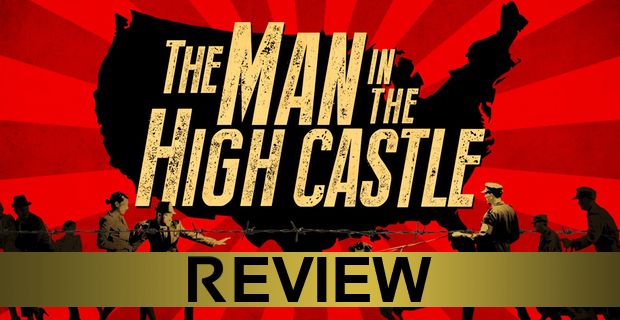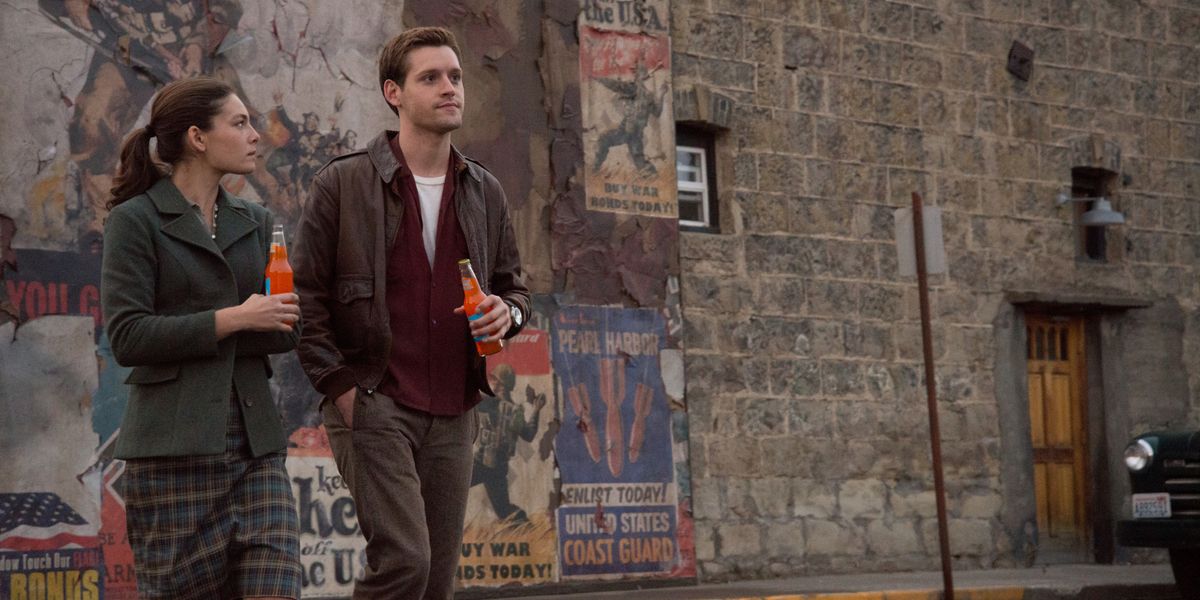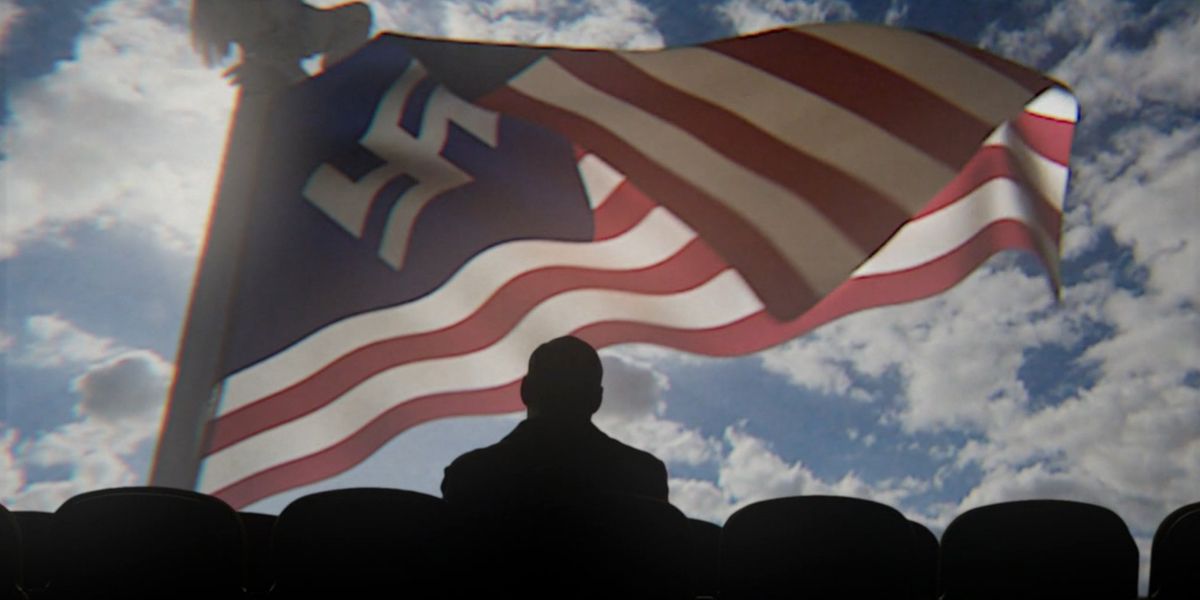[This is a review of The Man in the High Castle. There will be mild SPOILERS.]
-
Amazon's The Man in the High Castle, adapted from the high-concept alternate history novel of the same name by Philip K. Dick, makes astounding use of its visual palette to create a wholly believable world in which the Nazi's and Japan won World War II, turning the United States into a split territory under their shared rule. The series, produced by Ridley Scott and developed by Frank Spotniz of The X-Files, would have been an appealing entry for any network or streaming service based on its beguiling premise alone. But the way in which the series so deftly engages the audience through its twisting of familiar cultural iconography enriches the viewing experience beyond simply watching its narrative unfold.
In the early going, that narrative largely concerns the efforts of Obergruppenfürher John Smith (Rufus Sewell) to undermine an uprising spurred on by a series of propagandist films that depict the United States as having been victorious in the war. The films wind up in the hands of Smith's acolyte Joe Blake (Luke Kleintank) and Juliana Crain (Alexa Davalos), an idealistic young woman with familial ties to the resistance. Though the two are working at cross-purposes, they eventually meet in the neutral zone of the Rocky Mountains, where their allegiances and ideologies inevitably come to a head.
Though it devotes plenty of time to the plots of Joe and Juliana, The Man in the High Castle boasts an impressive ensemble cast that represents a multitude of perspectives. One of the most intriguing is the idea of a budding Cold War between the Japanese and Germany, as the inevitable passing of an aging and sickly Adolf Hitler promises new leadership within the Greater Nazi Reich (the name given to the massive chunk of U.S. territory now under German control) that will effectively end the country's relationship with its Axis ally.
That makes Smith a more important character than he would otherwise appear to be, as his Japanese counterpart, Chief Inspector Kido (Joel de la Fuente, Hemlock Grove) is also in search of the propagandist films and, specifically, Crain. But there are rumblings in the respective governments even higher up the chain of command than either Smith or Kido – particularly in the clandestine meetings between Cary-Hiroyuki Tagawa's Nobusuke Tagomi and Carsten Nørgaard's Rudolph Wegener – which adds an alluring sense of conspiracy and a surprising amount of seriousness to the proceedings.
The series unfolds at a deliberate pace, giving plenty of room for each character's respective plot threads to develop. At times in the early going certain threads can feel particularly diffuse, like Juliana's relationship with Frank Frink (Rupert Evans, Hellboy) and his run-in with both Kido and the man responsible for giving Juliana's sister the coveted film reel that ostensibly sets her plot in motion. And yet, as much as the characters and their particular narratives benefit from the unhurried pace, it is the series' main selling point that benefits the most.
There is an astonishing amount of world-building going on in the first episode alone. The pilot has been available to Prime subscribers for some time now, but watching it and the second episode, 'Sunrise,' again, in advance of the season's remaining eight episodes, is a reminder of just how much effort has gone into crafting the look and tone of the series. And to that end, it becomes clear that The Man in the High Castle is less about the plot of Juliana, Joe, John, the American rebellion, or even the larger conflict brewing between Germany and Japan. The story is more concerned with ruminating on ideologies and the importance of history, memory, and even nostalgia in the wake of astonishing subjugation.
In that sense, the series makes its iconography the star of the show. Swastikas become prevalent everywhere, from the American flag to armbands of the German military to, perhaps most effectively, the brightly lit visual overload that is Times Square. Similarly, San Francisco is remade with Japanese signage everywhere, leaving the no-man's land of the Rocky Mountains as the only place that looks remotely familiar, but even that feels distinct from its period trappings, as everything feels arrested, stuck in a pre-war aesthetic, despite it being the early '60s.
The period, too, becomes an important part of the series' examination of this alternate history and the ideas of oppression and influence lurking underneath the impressive design of the show's world. In this version, the United States has in effect become both a distant memory for those old enough to remember and an ideal for those too young to have experienced life in pre-war U.S. In a way, that makes what once was the United States a representation of the word utopia, not unlike how on Mad Men, Rachel Menken explained how the word has two meanings, depending on how it's pronounced. In The Man in the High Castle, the United States is both "the good place" and "the place that cannot be."
Because the concept of a United States (and all that entails) that never existed is so strong, it becomes the motivation behind many of the characters actions and helps fuel a sense of rebellion against overwhelming odds. It works to explain Juliana's willingness to put her life on the line for a film reel in the same way her prowess at aikido hints at the possibility of a diminutive attacker defeating a much larger adversary.
In the end, the series uses its impressive visuals to elicit an emotional response from the audience, making good use of its "What if?" premise by cleverly adjusting familiar symbols of the American way of life. Those symbols are altered in sometimes subtle and sometimes radically different ways. Those altered symbols make the show feel remarkably convincing, and help position it as one of the most intriguing offerings of Amazon's original programming.
-
The Man in the High Castle season 1 is available on Amazon Prime.



